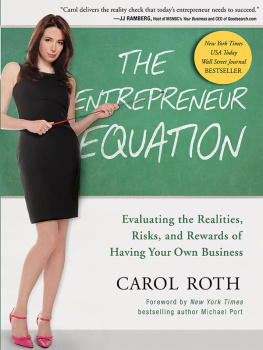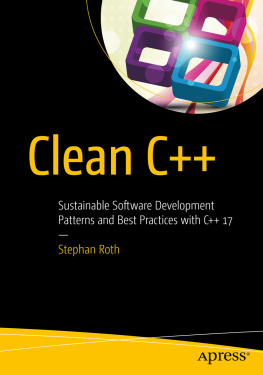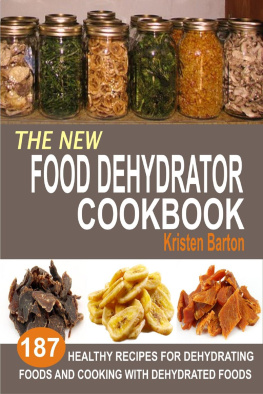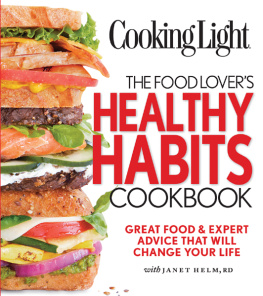

 Copyright 2014, 2022 by Skyhorse Publishing Previously published as The Healthy Raw Food Diet All rights reserved. No part of this book may be reproduced in any manner without the express written consent of the publisher, except in the case of brief excerpts in critical reviews or articles. All inquiries should be addressed to Skyhorse Publishing, 307 West 36th Street, 11th Floor, New York, NY 10018. Skyhorse Publishing books may be purchased in bulk at special discounts for sales promotion, corporate gifts, fund-raising, or educational purposes. Special editions can also be created to specifications. For details, contact the Special Sales Department, Skyhorse Publishing, 307 West 36th Street, 11th Floor, New York, NY 10018 or .
Copyright 2014, 2022 by Skyhorse Publishing Previously published as The Healthy Raw Food Diet All rights reserved. No part of this book may be reproduced in any manner without the express written consent of the publisher, except in the case of brief excerpts in critical reviews or articles. All inquiries should be addressed to Skyhorse Publishing, 307 West 36th Street, 11th Floor, New York, NY 10018. Skyhorse Publishing books may be purchased in bulk at special discounts for sales promotion, corporate gifts, fund-raising, or educational purposes. Special editions can also be created to specifications. For details, contact the Special Sales Department, Skyhorse Publishing, 307 West 36th Street, 11th Floor, New York, NY 10018 or .
Skyhorse and Skyhorse Publishing are registered trademarks of Skyhorse Publishing, Inc., a Delaware corporation. Visit our website at www.skyhorsepublishing.com. 10 9 8 7 6 5 4 3 2 1 Library of Congress Cataloging-in-Publication Data is available on file. Cover design by David Ter-Avanesyan Cover photo credit: Shutterstock Print ISBN: 978-1-5107-6487-3 Ebook ISBN: 978-1-5107-7015-7 Printed in China CONTENTS 


 Kitchen Equipment I often get asked what equipment I have in my raw food kitchen. The following are the items I find helpful and use quite often. Knives: You can do almost anything you need to do with a good, sharp chopping knife and a paring knife.
Kitchen Equipment I often get asked what equipment I have in my raw food kitchen. The following are the items I find helpful and use quite often. Knives: You can do almost anything you need to do with a good, sharp chopping knife and a paring knife.
Your knives are important and worth investing in. Keep them sharp to avoid accidents. Food Processor: I use a KitchenAid food processor. It is my favorite. It is important to note that different food processors have different-sized motors, which means it may take longer for those with smaller motors to get the job done. Dehydrators: I use the TSM stainless steel dehydrator.
Another favorite among raw foodists is the Excalibur. I have both. You want to make sure that your dehydrator has a temperature control. Spiral Cutter: A good spiral cutter is a great asset for your kitchen. It makes vegetable noodles from all kinds of veggies, such as zucchini. High-Speed Blenders: There are two high-speed blenders that are really worth mentioning.
One is the Vitamix and the other is the Blendtec. I have both in my kitchen and they each work very well. The Vitamix relies on a plunger to work with more difficult food, while the Blendtec has a variable speed. The Vitamix is a little heavier and more expensive. Its easier to get your food out of the Blendtec, which has a wide jar. Magic Bullet Blender: These powerful little blenders work great when you only need to blend a small amount.
They are reasonably priced and, with the two different blades, are very versatile. Microplane: Initially developed as a woodworking tool, this grater is amazing in the kitchen. You can get them in many different sizes. They quickly grate ginger and garlic or zest lemons and oranges. Mandoline Slicer: A great way to slice fruits and veggies. You can slice from inch to paper thin.
Check prices. They range from very expensive to inexpensive. Make sure you get one that is easy to slice with and use caution. Whisk: I have whisks in many sizes in my kitchen. When I am mixing up a quick ganache, there is nothing better. The smaller ones work great when you have small amounts.
Make sure you have a small whisk and a medium whisk for starters. Sprouting Jars: I like to keep a couple of different sizes on hand. These are glass jars with mesh tops that screw on. They make sprouting very easy. Springform Pans: Springform pans are wonderful when making cheesecakes and some tarts. They are metal pans that have removable bottoms, making unmolding very easy.
Tart Pans: I have a large collection of tart pans. These are pans that have fluted edges and removable bottoms. I love the smaller sizes for individual servings and the larger sizes when I want to make a larger tart. They are good for both sweet and savory dishes. Baking Rings: Baking rings are metal rings that are about 3 inches in diameter and about 3 inches tall. They are great when making stacked food.
Helpful Hints Dehydration: In the raw food world, the dehydrator is your oven. It is a very versatile piece of equipment that allows you to make baked items without destroying the vitamins, minerals, enzymes, and other nutrients that occur naturally in our food. The dehydrator works by circulating warm air around food. By keeping the temperature below 116F, we keep the nutrients in the food intact. The dehydrator opens the door to gourmet raw food, allowing endless menu possibilities. Veggie chips, eggplant bacon, burgers, breads, and crackers are just some of the treats you will discover.
The most important thing to remember with dehydration is that the food temperature needs to stay under 116F. You will notice that many times (not every), I start dehydration at a higher temperature and then reduce the temperature after an hour. Many people question if this is still considered raw. Rest assured, it is. The food temperature is what we are concerned with here, and in that first hour, the food being dehydrated is only kicking off moisture. The food temperature never goes over 115F.
Just remember to turn the temperature down after the initial time period. Setting a kitchen timer is the easiest way to do this. There are quite a few benefits from dehydrating this way. First, it cuts the dehydration time down quite a bit, using less energy, which is better for our planet. Second, it helps prevent bacteria growth and fermentation that can occur when you dehydrate at lower temperatures for longer periods of time. It is a good idea to rotate your shelves when you are dehydrating.
You can rotate them from front to back and from top to bottom. The back and the top of the dehydrators are the warmest places. I also calibrate my dehydrators. An oven thermometer works well for this. Place it on the top shelf and let it run long enough to get an accurate temperature. Times are estimates.
Different dehydrators will dry at different speeds. Air humidity can even affect drying times. The best way to deal with this is to keep an eye on your food as it dehydrates. There are certain foods that you are going to want to dehydrate completely dry, such as crackers and flatbreads. Others should be somewhat chewy. The recipes give you suggested times and textures.
Ingredients: Always make sure you are using the freshest ingredients when making your raw recipes. Fruit should be ripe, but not overly ripe. Vegetables should be fresh and used as close to purchasing as possible. We dont have the option of cooking to cover up not-so-great ingredients. So, do yourself a big favor and use the best possible ingredients that you can get. Frozen Vegetables and Fruits: I often get asked about frozen vegetables and fruits.
Next page



















 Copyright 2014, 2022 by Skyhorse Publishing Previously published as The Healthy Raw Food Diet All rights reserved. No part of this book may be reproduced in any manner without the express written consent of the publisher, except in the case of brief excerpts in critical reviews or articles. All inquiries should be addressed to Skyhorse Publishing, 307 West 36th Street, 11th Floor, New York, NY 10018. Skyhorse Publishing books may be purchased in bulk at special discounts for sales promotion, corporate gifts, fund-raising, or educational purposes. Special editions can also be created to specifications. For details, contact the Special Sales Department, Skyhorse Publishing, 307 West 36th Street, 11th Floor, New York, NY 10018 or .
Copyright 2014, 2022 by Skyhorse Publishing Previously published as The Healthy Raw Food Diet All rights reserved. No part of this book may be reproduced in any manner without the express written consent of the publisher, except in the case of brief excerpts in critical reviews or articles. All inquiries should be addressed to Skyhorse Publishing, 307 West 36th Street, 11th Floor, New York, NY 10018. Skyhorse Publishing books may be purchased in bulk at special discounts for sales promotion, corporate gifts, fund-raising, or educational purposes. Special editions can also be created to specifications. For details, contact the Special Sales Department, Skyhorse Publishing, 307 West 36th Street, 11th Floor, New York, NY 10018 or .


 Kitchen Equipment I often get asked what equipment I have in my raw food kitchen. The following are the items I find helpful and use quite often. Knives: You can do almost anything you need to do with a good, sharp chopping knife and a paring knife.
Kitchen Equipment I often get asked what equipment I have in my raw food kitchen. The following are the items I find helpful and use quite often. Knives: You can do almost anything you need to do with a good, sharp chopping knife and a paring knife.